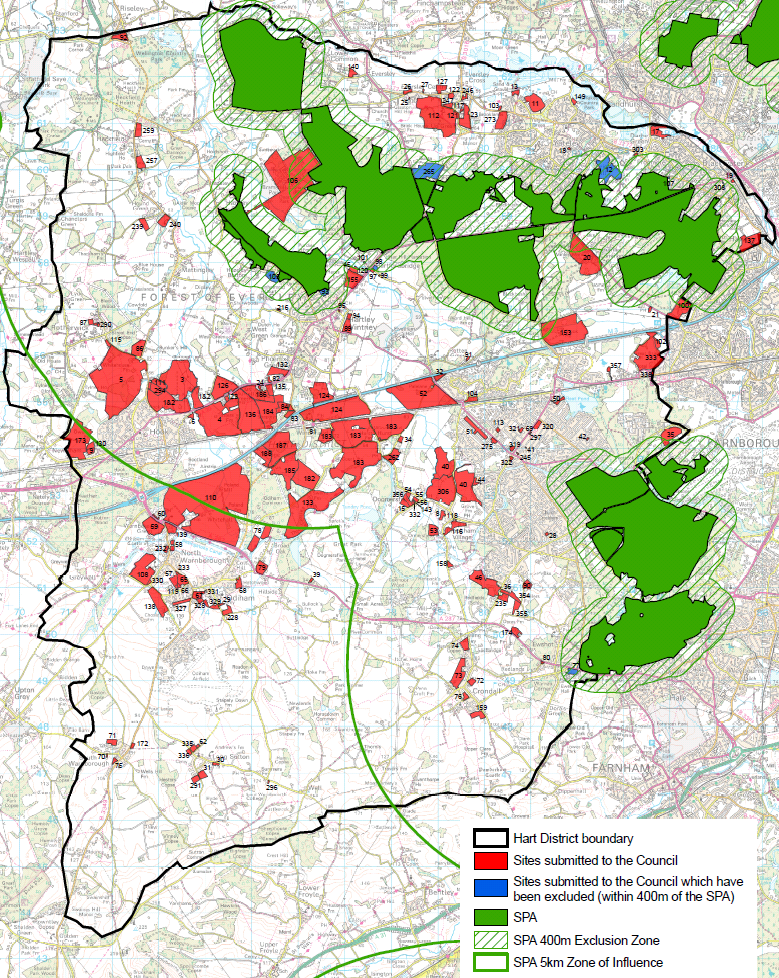Is this what we want for Hart? Take a look at the image taken from a document on the council website, that shows all of the sites Hart are looking at for development into the future as at January 2015.
Whilst not all of them will make it into the Local Plan, it is clear that we are on the slippery slope to Hartley Wintney, Hook, Fleet, Dogmersfield, the Crookhams, Winchfield and Odiham coalescing into a single, sprawling conurbation. Each settlement will lose its distinctive identity and we will lose the green fields, wildlife and rural feel that make Hart such a great place to live.
Many of these sites are within the zone of influence of Thames Valley Special Protection Area and close to other environmentally sensitive areas such as the SSSIs at Basingstoke Canal and Odiham Common and the numerous other Sites of Interest to Nature Conservation (SINCs) that are dotted around the district.
The We Heart Hart campaign says we need to challenge this mindset of building a new town all over our green fields and force a re-think of the whole development strategy, with a much stronger focus on building on brownfield sites and increasing building density in the existing settlements.
Please sign the petition opposing this style of development: https://you.38degrees.org.uk/petitions/we-hart

